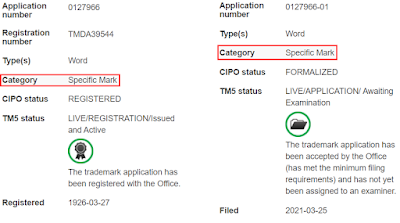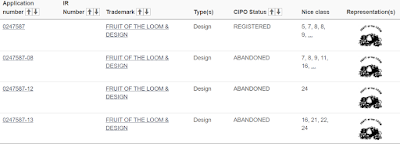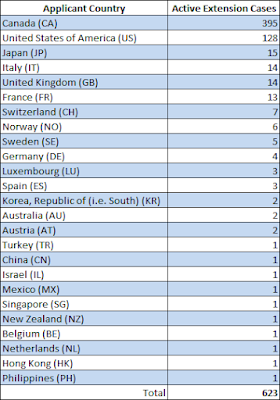This post looks at extension applications, which seek to extend the goods / services coverage of an existing trademark registration pursuant to Section 41(2) of the Trademarks Act (R.S.C., 1985, c. T-13).
You can’t investigate extension applications via CIPO’s online trademark database because they are not exposed for public search purposes (a search of the online database may reveal one or more extension applications, but you can’t search such applications directly). In order to investigate extension applications one must work with CIPO’s trademark .xml data.
As of 25-Oct-2021 CIPO’s online trademark database includes 2,774 extension applications. 623 of those applications are currently active—the remaining 2,151 are inactive (i.e. abandoned, deemed never filed, inactivated, refused, withdrawn, etc.). The current status of the 623 active extension applications is as follows:
Two of the currently active extension applications pertain to certification marks; 617 pertain to trademarks. The other four are so-called specific marks, which may be unfamiliar to some current practitioners. Specific marks derive from the Trade Mark and Design Act, (1868) 31 Vict., c. 55; RSC 1906 c. 71 (the TMDA). Specific marks were dropped from the Unfair Competition Act (1932) 22-23 George V c. 38 (the UCA—successor to the TMDA). See General vs. Specific Marks for further details of specific marks.
Why do we see currently pending applications in the specific mark category—almost a century after the abolition of that category? Because CIPO puts extension applications in the same category as the original application which yielded the registration that is to be extended. For example, extension application no. 127966-01 was filed 25-Mar-2021, seeking extension of registration TMDA39544 which issued 27-Mar-1926 from application no. 127966 filed pursuant to the TMDA. As highlighted in the two online database extracts below, both the extension application (on the right) and the original application (on the left) are in the specific mark category (click to enlarge the image):
Sometimes, two or more applications to extend the same registration are concurrently pending, e.g. to accommodate expanded use of a mark, to suit certain prosecution objectives, etc. For example, as of 25-Oct-2021, three separate applications to extend registration TMA924542 are pending, as shown in the online database extract below (click to enlarge the image):
There is no limit to the number of extension applications which may be filed. For example, at least 13 separate applications have been filed to extend registration TMA120178 which issued from original application no. 247587, as can be deduced from the online database extract below (click to enlarge the image):








